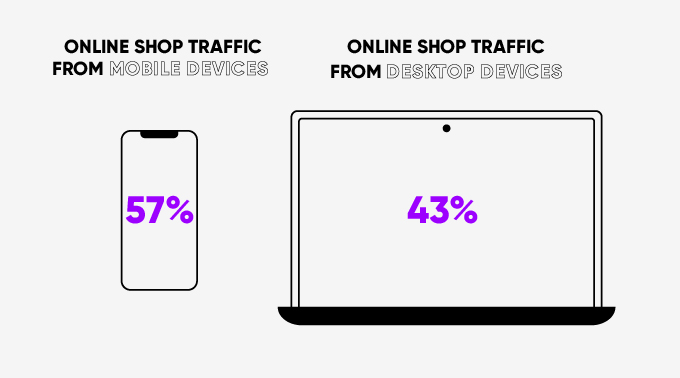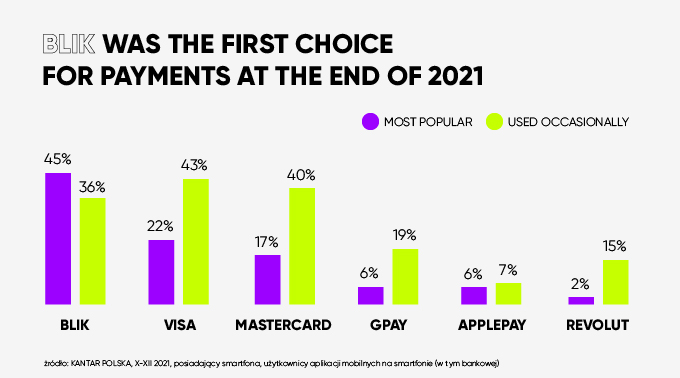After planning a strategy for your e-commerce, comes the moment to implement your ideas and build your e-store. At this stage you need to make some very important decisions – from choosing the right e-commerce platform to the way you present your products. The wrong approach to many factors can result in the low conversion of your e-store. In this article, we will look at the most common mistakes made in e-commerce, focusing on setting up a store.
Technical errors – pay attention to them at the beginning of e-commerce creation
1. Wrong choice of e-commerce platform
Every e-commerce platform is different. One will only have basic features, while another will be more to your liking. The most important thing, however, is that it grows with your business, i.e. it has to give you the chance to expand. This obviously involves higher costs, but it is worth considering your shop’s needs and doing the appropriate research before making such a choice.
The most popular e-commerce platforms are WordPress + WooCommerce, Prestashop, Shopify, Click Shop, IaI Shop, Shoplo, Magento, and Redcart.
2. Custom CMS (Content Management System)
There are plenty of platforms on the market to help you run an online shop. You can, of course, decide to build your own CMS for this purpose, but this is strongly not recommended.
Despite the much higher costs involved in creating such software, there is also the very important issue of integration with other platforms. Often, such custom solutions do not have much in the way of integration. In addition, it is difficult to anticipate all the features that may come in handy in the development of your shop. There is also the question of security, which is extremely important in this type of market. For this reason, it is better to trust in tried and tested ready-made tools that will fully meet your expectations.
3. Failure to properly secure the shop and customer data
The security of your e-business and especially your customers’ data is a very important aspect of creating online sales. Fraudsters these days are extremely modern and innovative. Therefore, dangers such as link infecting, phishing, and financial fraud are the norm.
It is worth securing sites with SSL and TLS certificates for payment methods. In addition, it is worth investing in good anti-virus software.
Functional mistakes – at the UX design step
1. Low-quality photos and poor product descriptions
What your company brand sells needs to be presented well enough. As we all know, people buy with their eyes. If your product doesn’t have good enough photos taken, or if the quality is poor or average – there is a very high risk that your products will have poor sales results.
The description of a product also performs a very important role. Often a buyer facing a purchase decision may give up if they do not find specific information about the product they want to buy.
2. Non-functional and incomprehensible division of products into categories
Dividing your products correctly into categories and adapting the appropriate site navigation for them is extremely important when setting up your e-commerce. It is worth analyzing the structure of your services or products and arranging them in such a way that the user can easily find what he or she is looking for.
3. Too many pop-up windows
Probably when planning your e-commerce strategy and designing your shop you will have in mind the use of pop-ups. However, this is a very risky procedure that should be used with care. Too many of them can drive anyone away, which can result in shoppers quickly leaving your shop. Of course, in a marketing context pop-ups are important, but they should be very thoughtful.
Google in 2016 even introduced penalties for using pop-ups on mobile versions in the form of devaluation in search results. If the pop-ups serve a temporary function, this is acceptable under Google’s laws.
4. Neglecting the mobile version of the e-commerce
A very important element when creating an online shop is the mobile design stage. In fact, many UX designers choose to start their design with just this device. For a very simple reason – according to a Senuto report, as much as 57% of online shop traffic globally comes from mobile devices and only 43% from desktop devices.
This means nothing other than that the majority of shoppers nowadays shop via a mobile device. Of course, this depends on the industry and the products it offers, but it is worth paying attention to this at the UX design stage so that your shop’s website is correctly adapted for display on smaller devices.

5. Use of hidden costs
A common action when planning an e-commerce strategy is to hide certain costs during the ordering and payment process. This is a huge mistake, as it gives the illusory impression that our potential customer “won’t notice anything”. It is worth avoiding hidden costs written in small print, or unexpectedly high shipping prices revealed at the very end of the order process path. And what’s more, buyers are often able to abandon the transaction because shipping is not free.
Don’t confuse shoppers who visit your shop. Focus on offering them the very truth and the possibility of a reliable transaction.
6. Ill-conceived navigation
Properly prepared and developed navigation is an integral part of UX design. The menu is the first step a customer encounters when entering your website. If he easily finds what he is looking for, he will definitely stay there. If, on the other hand, it takes him a long time to get the kind of information and products he came here for – the chances of getting a new customer are slim to none.
The menu should be carefully planned together with the UX designer. Here, it is worth looking at the industry, the products on offer, and the target group and their needs.
7. Few payment methods available
The more payment methods are available – the better. It is worth noting that no one will open a new account or few will enter their card details to place an order in your shop. Fortunately, this is not a big problem these days. The most popular payment methods are BLIK (Poland), ApplePay, or GooglePay mobile transactions. The shopper is sure to return to your shop if the payment process is transparent and quick for them.

Summary
Applying the above points and avoiding mistakes in setting up your online shop can lead to increased sales of your products. It is worth considering the smallest nuances, as they can make the difference in the success of your e-commerce.
Want to know more about e-commerce? Subscribe to E-commerce Insights!

